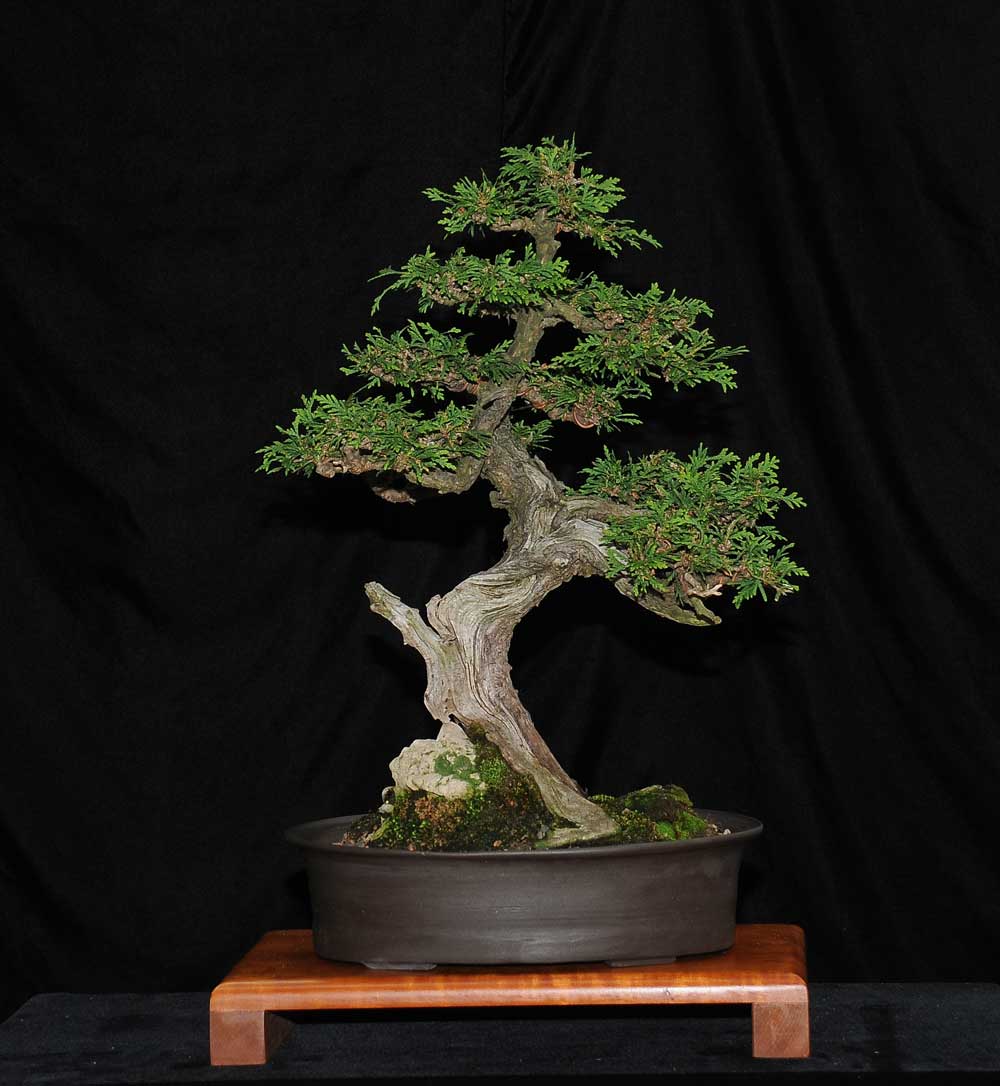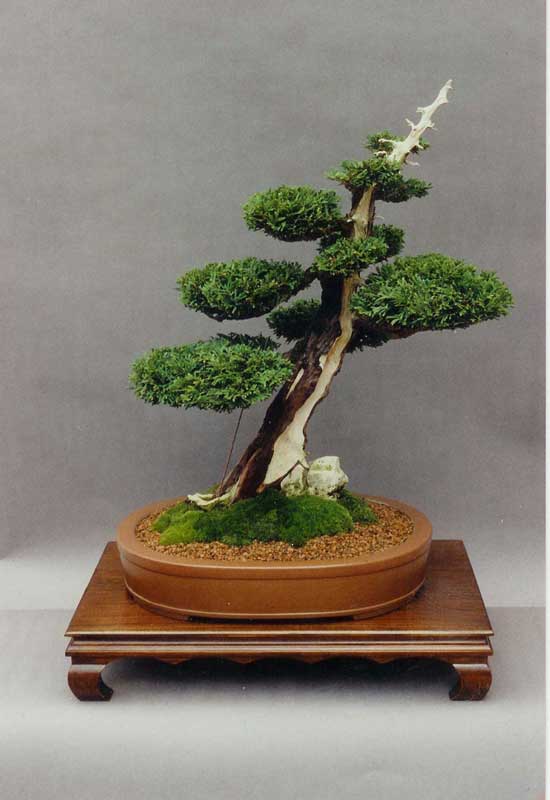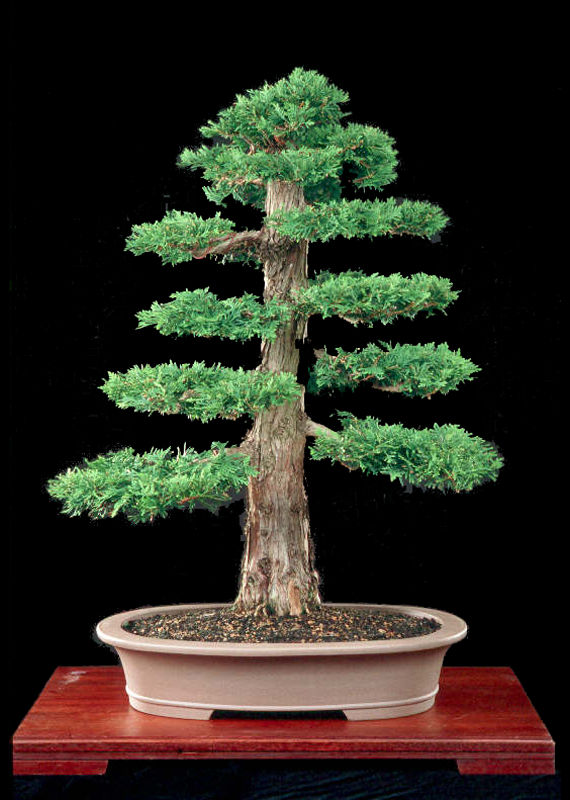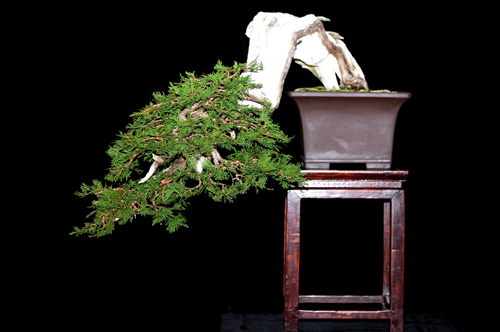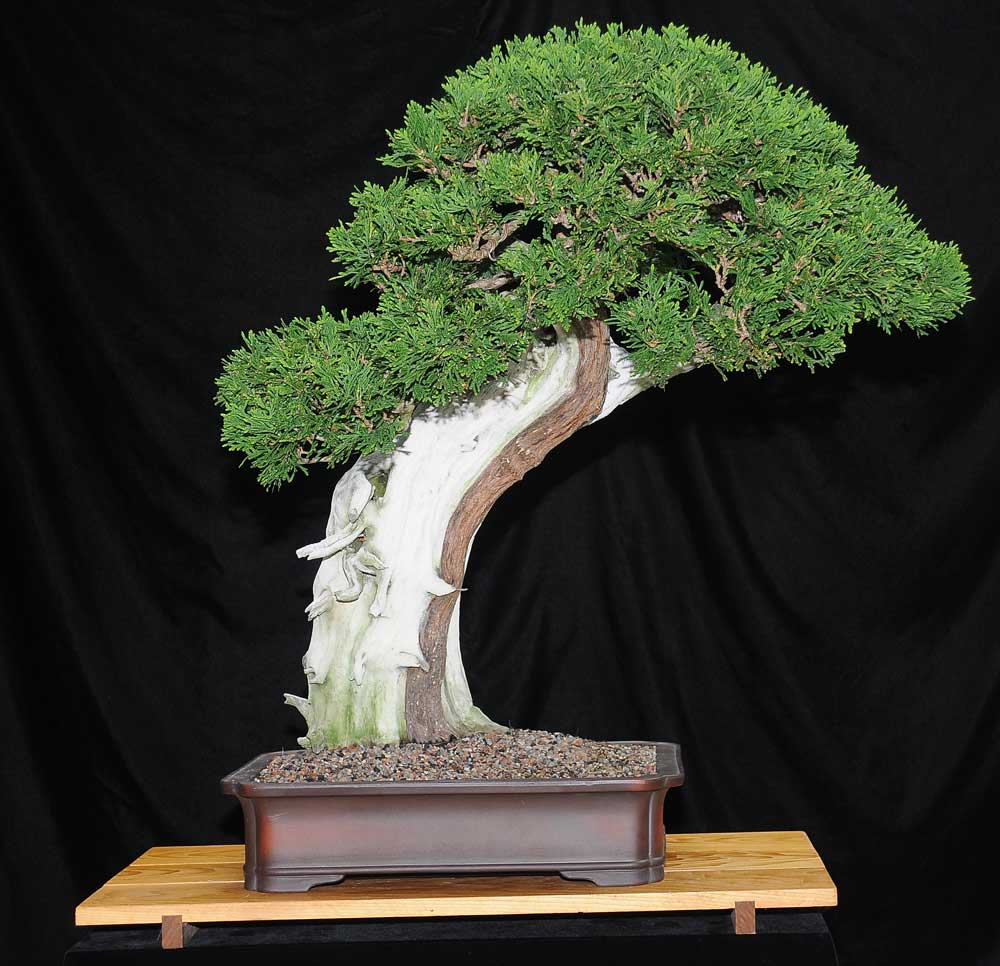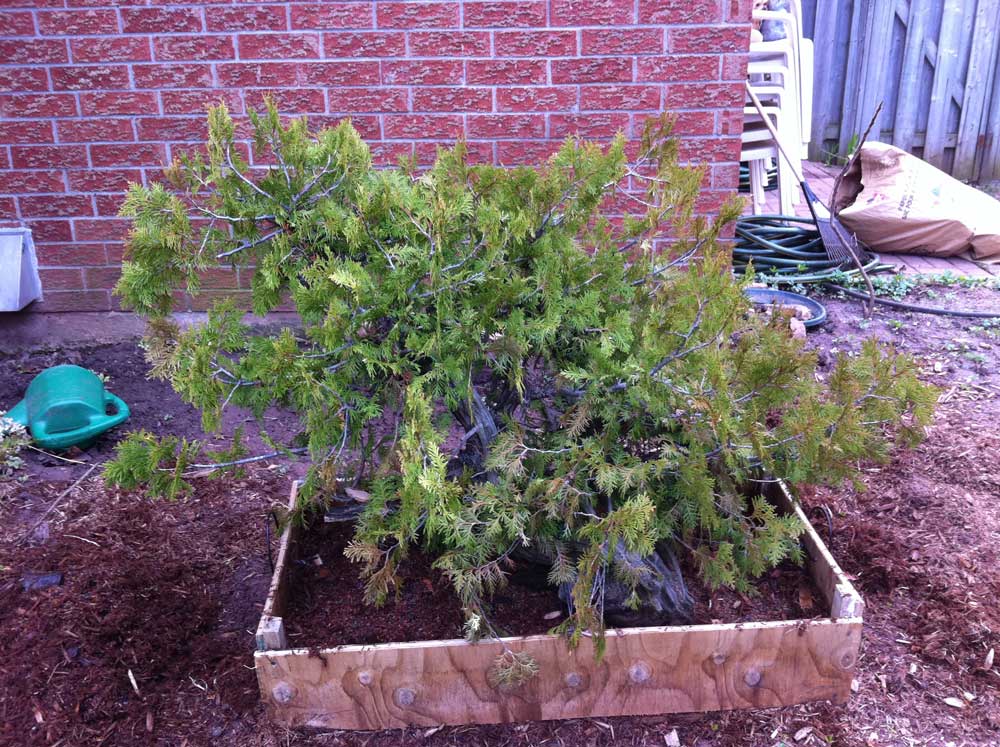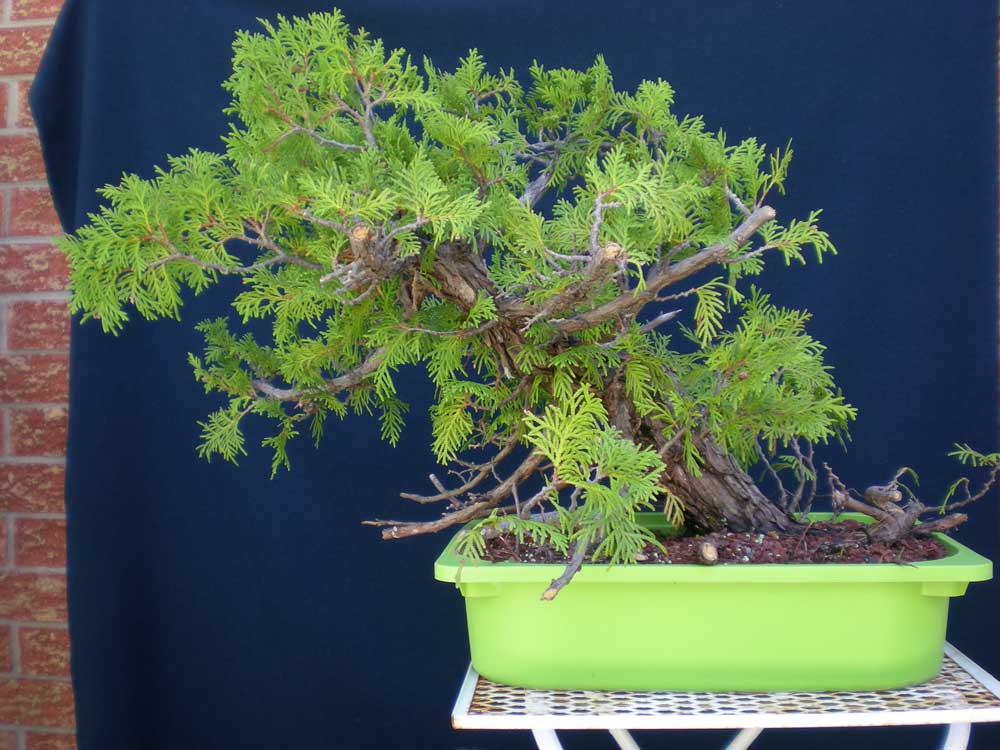This is a very old thuja with an unusual flaring base. It was collected on thin rocky soil with a very shallow root system. Collected thuja often have good nebari, but a hersheys kiss base like this is truly a gem, even though it is as flat as a pancake..


Monsieur David Easterbrook said I should cut off the branch on the left, and create a cascading effect with the foliage on the right. While I agree that this would make a striking image and balance the tree very nicely, I would be very concerned about the effect this would have on the lovely tubular live vein and am therefore probably not willing to take that risk.
Instead, my goal for this tree is somewhat as shown in the crappy virtual. The first big, thrusting branch on the right will need to be bent down significantly, and the foliage grown way out to balance the image. It will probably be 5 years of growth before refinement can begin on this tree. Deadwood work will be gradual. An entire second trunk was killed off last summer and I am slowly blending the deadwood into the trunk so as not to disturb sap flow, hence the ugly artificial cut line.
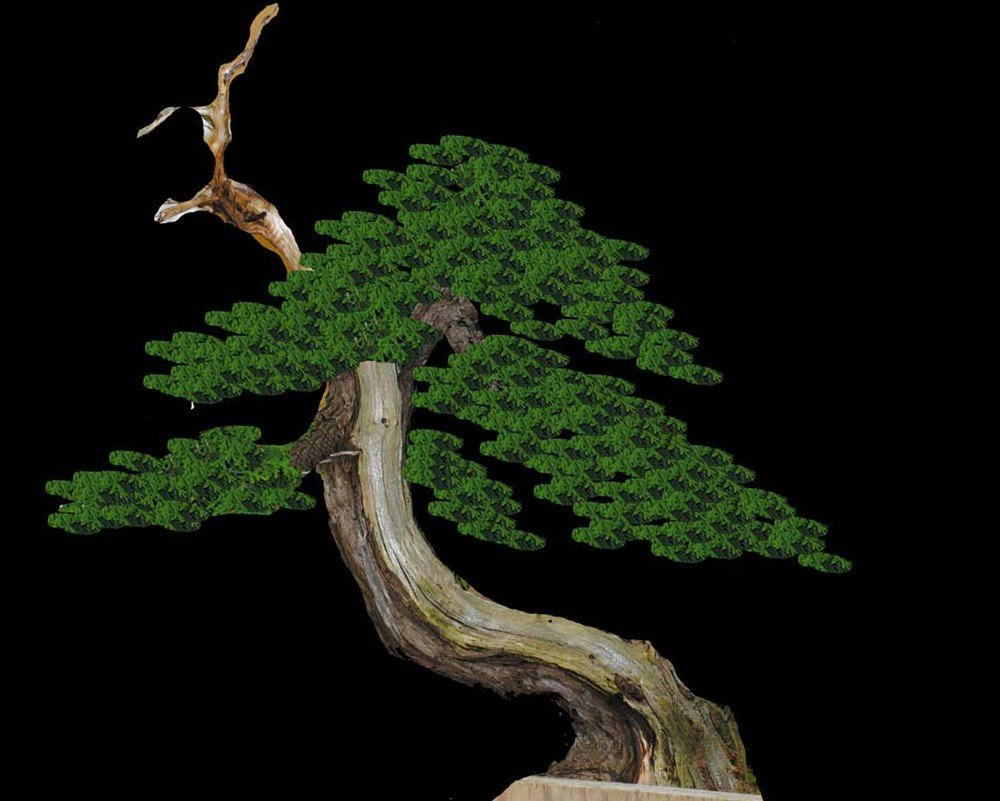


Monsieur David Easterbrook said I should cut off the branch on the left, and create a cascading effect with the foliage on the right. While I agree that this would make a striking image and balance the tree very nicely, I would be very concerned about the effect this would have on the lovely tubular live vein and am therefore probably not willing to take that risk.
Instead, my goal for this tree is somewhat as shown in the crappy virtual. The first big, thrusting branch on the right will need to be bent down significantly, and the foliage grown way out to balance the image. It will probably be 5 years of growth before refinement can begin on this tree. Deadwood work will be gradual. An entire second trunk was killed off last summer and I am slowly blending the deadwood into the trunk so as not to disturb sap flow, hence the ugly artificial cut line.


